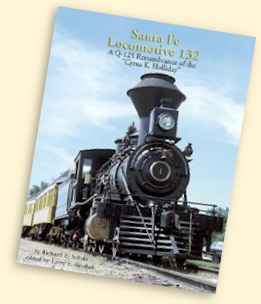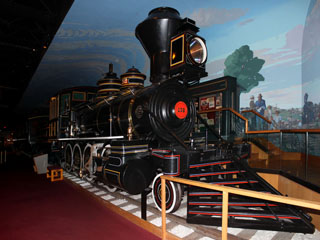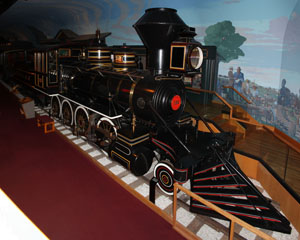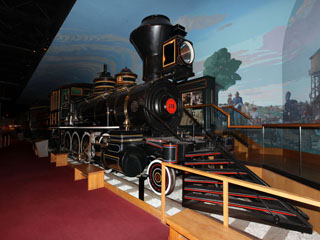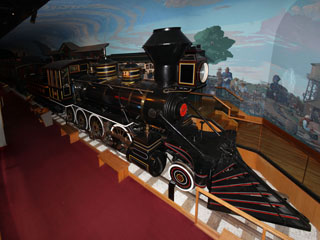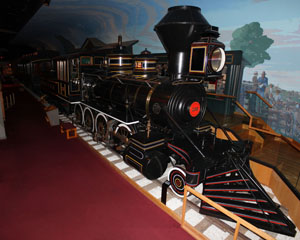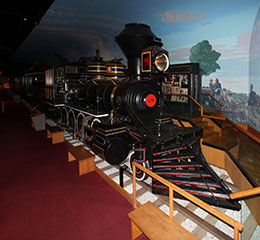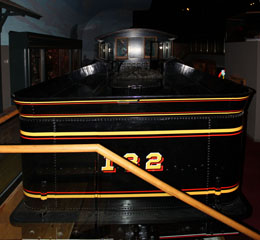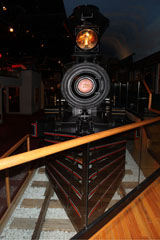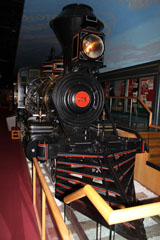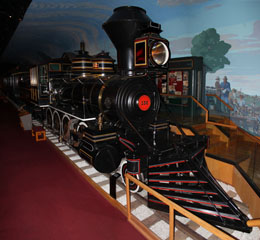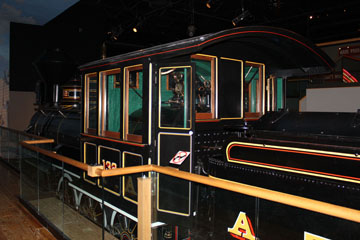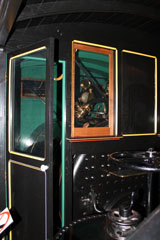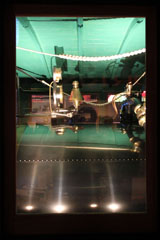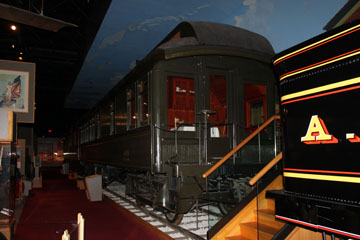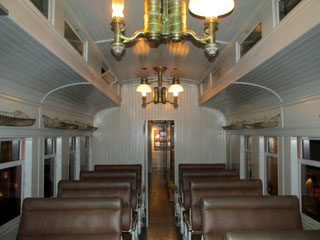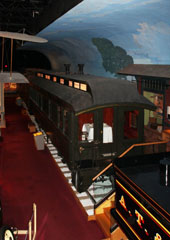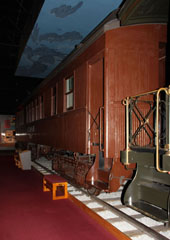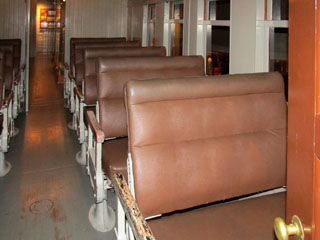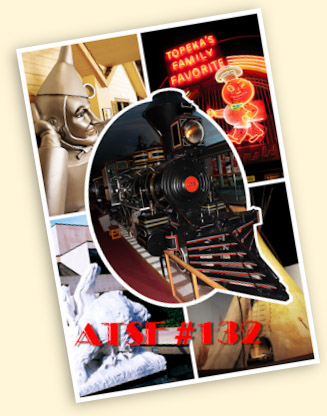

The Kansas Museum of History in
Topeka, KS, is home to Consolidation type (2-8-0) locomotive #132, built in 1880 for the Atcheson, Topeka & Santa Fe by Burnham, Parry, Williams & Co., an early incarnation of the Baldwin Locomotive Works at a cost of $12,175.
#132, the oldest surviving AT&SF locomotive, now rests on a purpose-built stretch of track in the "Trains & Towns" exhibition hall on the museum's ground floor. It has been beautifully restored to its original 1880s appearanc, but there's lots more to see and do at the museum than #132. It's a neat museum and well worth a visit.
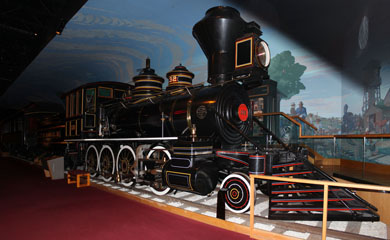
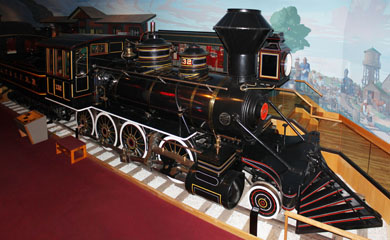
#132 was designed to tackle steep grades on Raton Pass on the Colorado-New Mexico border, the AT&SF's main line linking Chicago, IL, with Los Angeles, CA, and the rest of California.
Baldwin had built a Consolidation tank locomotive (#204 or "Uncle Dick") in 1878 to haul freight over the newly opened grade. This was the largest and
heaviest locomotive built up to that time, and its success convinced the AT&SF to order ten more
2-8-0s for service over the pass, locomotives #130-#139, and a further thirty-five Consolidations were ordered by the AT&SF between 1880 and 1881.
#132 stayed on Raton Pass for twenty years, renumbered #912 in 1898 and #2414 in 1900.
As more powerful locomotives arrived, #132 moved to yard duties and, in 1923, went to the Argentine Yards in Kansas City as an 0-8-0. It worked there until 1939 when, after nearly sixty years of service, it was to be scrapped. But, identified as AT&SF's oldest surviving locomotive, it was saved and refurbished as a 2-8-0 in 1940-1941 for display.
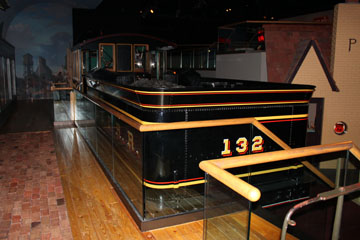
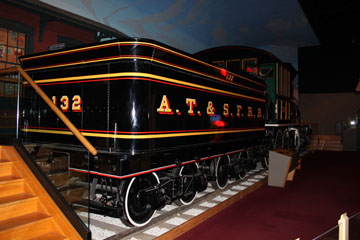
Renumbered #132, the locomotive became a corporate symbol for the AT&SF, and was spared the WWII scrap drives that decimated many steam locomotives.
In 1950, it was overhauled and returned to operation as #1 and named "Cyrus K. Holliday" in honour of the founder of the AT&SF. It received a new tender and two 1880s coaches and steamed at local celebrations, fairs and other events. Occasionally, the locomotive appeared in films, as well as in an episode of the television series "Gunsmoke".
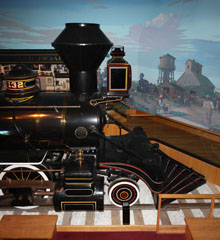
A coal burner, #132 weighs 108,500 lbs. It has 51" drivers and 19" x 28" cylinders. Operating at a boiler pressure of 140 psi, it delivered 23,600 lbs tractive effort.
The straight top boiler is 58" in diameter, with 213 tubes, 2" in diameter and 10' 11¾" long. The firebox is 119⅛" x 33⅜" with a 27⅘ sq ft grate. Total heating surface was 1,376 sq ft, the firebox contributing 153 sq ft and the tubes 1,223 sq ft.
After an active life of eighty-four years, #132 steamed for the last time in 1961, and
public displays became less and less frequent. In 1977, the AT&SF made a commitment to donate #132 to the Kansas Historical Society for display
at the Kansas Museum of History, then in the planning stages.
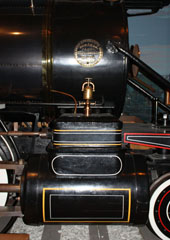
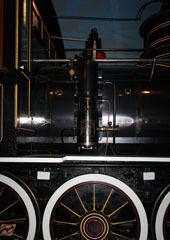

In February 1983, #132 was finally hauled by flatbed to the museum, although it was then still largely a construction site, and moved into place.
With the help of Western Railroad Services of Sonoma, CA, the museum restored the locomotive to its appearance when it first left the Baldwin shops in 1880, with red, white and gold trim, white tyres and polished brass fittings. It is now on display with the two coaches it was coupled to from 1950. These have been restored to their appearance as a 1920s drover's car and a 1910s division superintendent's car.
Related Links:
Kansas Museum of History Website
Santa Fe Railway Historical & Modeling Society
New Mexico Steam Locomotive and Railroad Historical Society
Send a comment or query, or request permission to re-use an image.
Richard E. Scholz wrote Santa Fe Locomotive 132, A Q-125 Remembrance of the Cyrus K. Holliday. It was edited by Larry E. Brasher and published by South Platte Press in 2005 (click on the cover to search for this book on Bookfinder.com).
